Evaluation of Localized Necking Models for Fracture Prediction in Punch-Loaded Steel Panels
Abstract
:1. Introduction
2. Localized Necking Prediction
2.1. Preliminaries
2.2. Bressan-Williams-Hill Model
2.3. Alternative Implementation of the BWH Model
3. Simulation of Panel Penetration Tests
3.1. Description of the Tests
3.2. Numerical Modeling
4. Results and Discussion
5. Conclusions
Author Contributions
Funding
Institutional Review Board Statement
Informed Consent Statement
Data Availability Statement
Conflicts of Interest
Abbreviations
| BWH | Bressan-Williams-Hill |
| BWH-E | Bressan-Williams-Hill - Extended |
| FLC | Forming Limit Curve |
| FLSD | Forming Limit Stress Diagram |
| MSFLD | Müschenborn-Sonne Forming Limit Diagram |
References
- Ringsberg, J.W.; Amdahl, J.; Chen, B.Q.; Cho, S.R.; Ehlers, S.; Hu, Z.; Kubiczek, J.M.; Kõrgesaar, M.; Liu, B.; Marinatos, J.N.; et al. MARSTRUCT benchmark study on nonlinear FE simulation of an experiment of an indenter impact with a ship side-shell structure. Mar. Struct. 2018, 59, 142–157. [Google Scholar] [CrossRef] [Green Version]
- Hogström, P.; Ringsberg, J.; Johnson, E. An experimental and numerical study of the effects of length scale and strain state on the necking and fracture behaviours in sheet metals. Int. J. Impact Eng. 2009, 36, 1194–1203. [Google Scholar] [CrossRef] [Green Version]
- Marinatos, J.; Samuelides, M. Towards a unified methodology for the simulation of rupture in collision and grounding of ships. Mar. Struct. 2015, 42, 1–32. [Google Scholar] [CrossRef]
- Storheim, M.; Amdahl, J.; Martens, I. On the accuracy of fracture estimation in collision analysis of ship and offshore structures. Mar. Struct. 2015, 44, 254–287. [Google Scholar] [CrossRef]
- Cerik, B.C.; Park, B.; Park, S.J.; Choung, J. Modeling, testing and calibration of ductile crack formation in grade DH36 ship plates. Mar. Struct. 2019, 66, 27–43. [Google Scholar] [CrossRef]
- Park, S.J.; Lee, K.; Cerik, B.C.; Choung, J. Ductile fracture prediction of EH36 grade steel based on Hosford—Coulomb model. Ships Offshore Struct. 2019, 14, 219–230. [Google Scholar] [CrossRef]
- Park, S.J.; Cerik, B.C.; Choung, J. Comparative study on ductile fracture prediction of high-tensile strength marine structural steels. Ships Offshore Struct. 2020. [Google Scholar] [CrossRef]
- Cerik, B.C.; Choung, J. Ductile fracture behavior of mild and high-tensile strength shipbuilding steels. Appl. Sci. 2020, 10, 7034. [Google Scholar] [CrossRef]
- Kõrgesaar, M.; Romanoff, J. Influence of mesh size, stress triaxiality and damage induced softening on ductile fracture of large-scale shell structures. Mar. Struct. 2014, 38, 1–17. [Google Scholar] [CrossRef]
- Storheim, M.; Alsos, H.S.; Hopperstad, O.S.; Amdahl, J. A damage-based failure model for coarsely meshed shell structures. Int. J. Impact Eng. 2015, 83, 59–75. [Google Scholar] [CrossRef]
- Liu, B.; Villavicencio, R.; Zhang, S.; Guedes Soares, C. A simple criterion to evaluate the rupture of materials in ship collision simulations. Mar. Struct. 2017, 54, 92–111. [Google Scholar] [CrossRef]
- Cerik, B.C.; Lee, K.; Park, S.J.; Choung, J. Simulation of ship collision and grounding damage using Hosford-Coulomb fracture model for shell elements. Ocean Eng. 2019, 173, 415–432. [Google Scholar] [CrossRef]
- Cerik, B.C.; Choung, J. Rate-dependent combined necking and fracture model for predicting ductile fracture with shell elements at high strain rates. Int. J. Impact Eng. 2020, 146, 103697. [Google Scholar] [CrossRef]
- Cerik, B.C.; Park, S.J.; Choung, J. Use of localized necking and fracture as a failure criterion in ship collision analysis. Mar. Struct. 2020, 73, 102787. [Google Scholar] [CrossRef]
- Cerik, B.C.; Choung, J. On the prediction of ductile fracture in ship structures with shell elements at low temperatures. Thin-Walled Struct. 2020, 151, 106721. [Google Scholar] [CrossRef]
- Cerik, B.C.; Park, S.J.; Choung, J. Predicting ductile fracture in maritime crash with a modified implementation of BWH criterion. Lect. Notes Civ. Eng. 2021, 64, 701–714. [Google Scholar] [CrossRef]
- Zhu, L.; Atkins, A.G. Failure criteria for ship collision and grounding. In Proceedings of the Seventh International Symposium on Practical Design of Ships and Mobile Units, The Hague, The Netherlands, 20–25 September 1998; pp. 149–156. [Google Scholar]
- Alsos, H.S.; Hopperstad, O.S.; Törnqvist, R.; Amdahl, J. Analytical and numerical analysis of sheet metal instability using a stress based criterion. Int. J. Solids Struct. 2008, 45, 2042–2055. [Google Scholar] [CrossRef] [Green Version]
- Cerik, B.C.; Ringsberg, J.W.; Choung, J. Revisiting MARSTRUCT benchmark study on side-shell collision with a combined localized necking and stress-state dependent ductile fracture model. Ocean Eng. 2019, 187, 106173. [Google Scholar] [CrossRef]
- Mattiasson, K.; Jergéus, J.; DuBois, P. On the prediction of failure in metal sheets with special reference to strain path dependence. Int. J. Mech. Sci. 2014, 88, 175–191. [Google Scholar] [CrossRef]
- Swift, H. Plastic instability under plane stress. J. Mech. Phys. Solids 1952, 1, 1–18. [Google Scholar] [CrossRef]
- Stoughton, T.B. Stress-based forming limits in sheet-metal forming. J. Eng. Mater. Technol. 2001, 123, 417. [Google Scholar] [CrossRef]
- Stoughton, T.B.; Zhu, X. Review of theoretical models of the strain-based FLD and their relevance to the stress-based FLD. Int. J. Plast. 2004, 20, 1463–1486. [Google Scholar] [CrossRef]
- Bai, Y.; Wierzbicki, T. Forming severity concept for predicting sheet necking under complex loading histories. Int. J. Mech. Sci. 2008, 50, 1012–1022. [Google Scholar] [CrossRef]
- Stoughton, T.B.; Yoon, J.W. A new approach for failure criterion for sheet metals. Int. J. Plast. 2011, 27, 440–459. [Google Scholar] [CrossRef]
- Li, Y.; Luo, M.; Gerlach, J.; Wierzbicki, T. Prediction of shear-induced fracture in sheet metal forming. J. Mater. Process Technol. 2010, 210, 1858–1869. [Google Scholar] [CrossRef]
- Park, S.J.; Choung, J. Punching fracture experiments and simulations of unstiffened and stiffened panels for ships and offshore structures. J. Ocean Eng. Technol. 2020. [Google Scholar] [CrossRef]
- Kõrgesaar, M.; Romanoff, J.; Remes, H.; Palokangas, P. Experimental and numerical penetration response of laser-welded stiffened panels. Int. J. Impact Eng. 2018, 114, 78–92. [Google Scholar] [CrossRef]
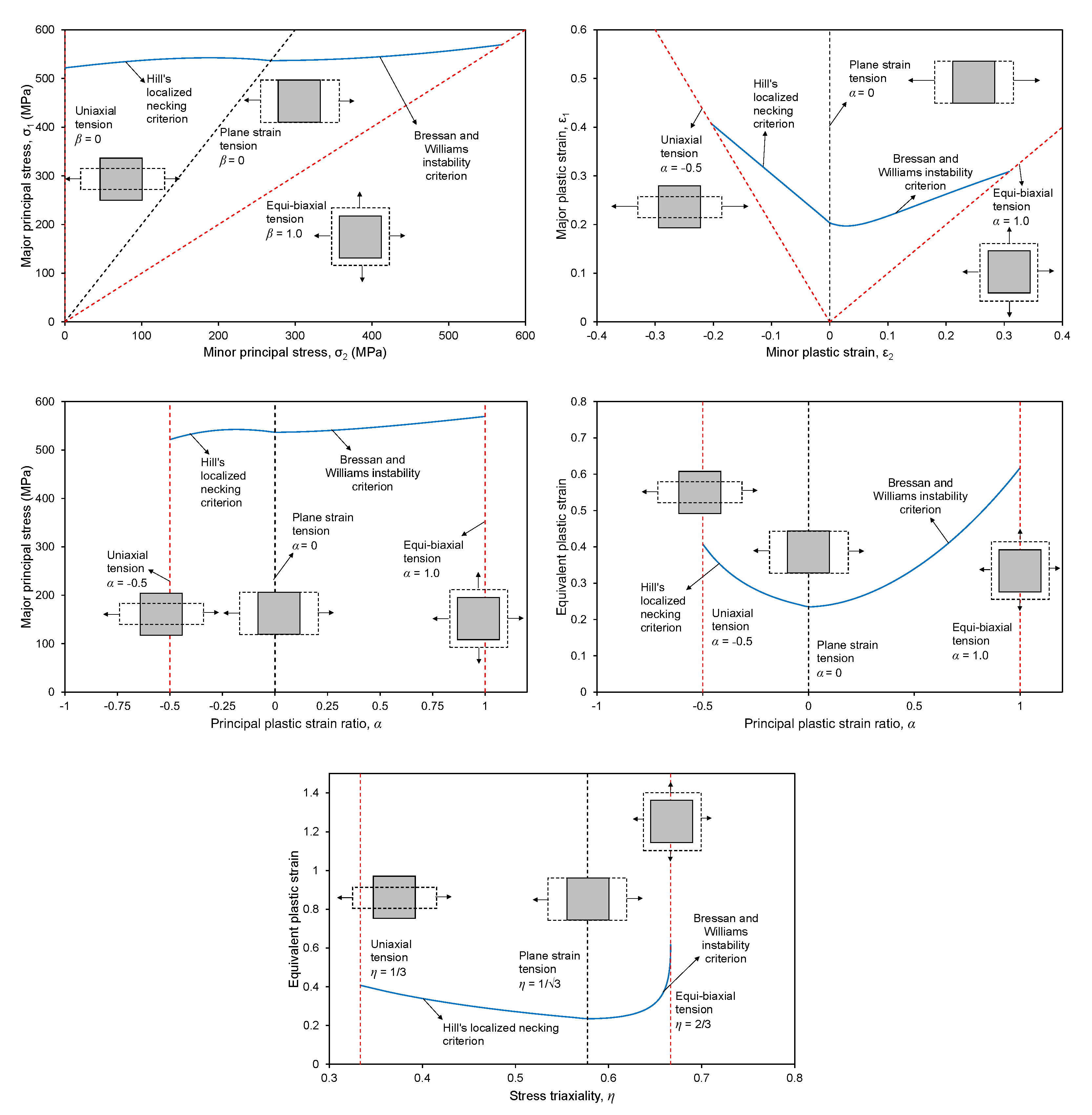


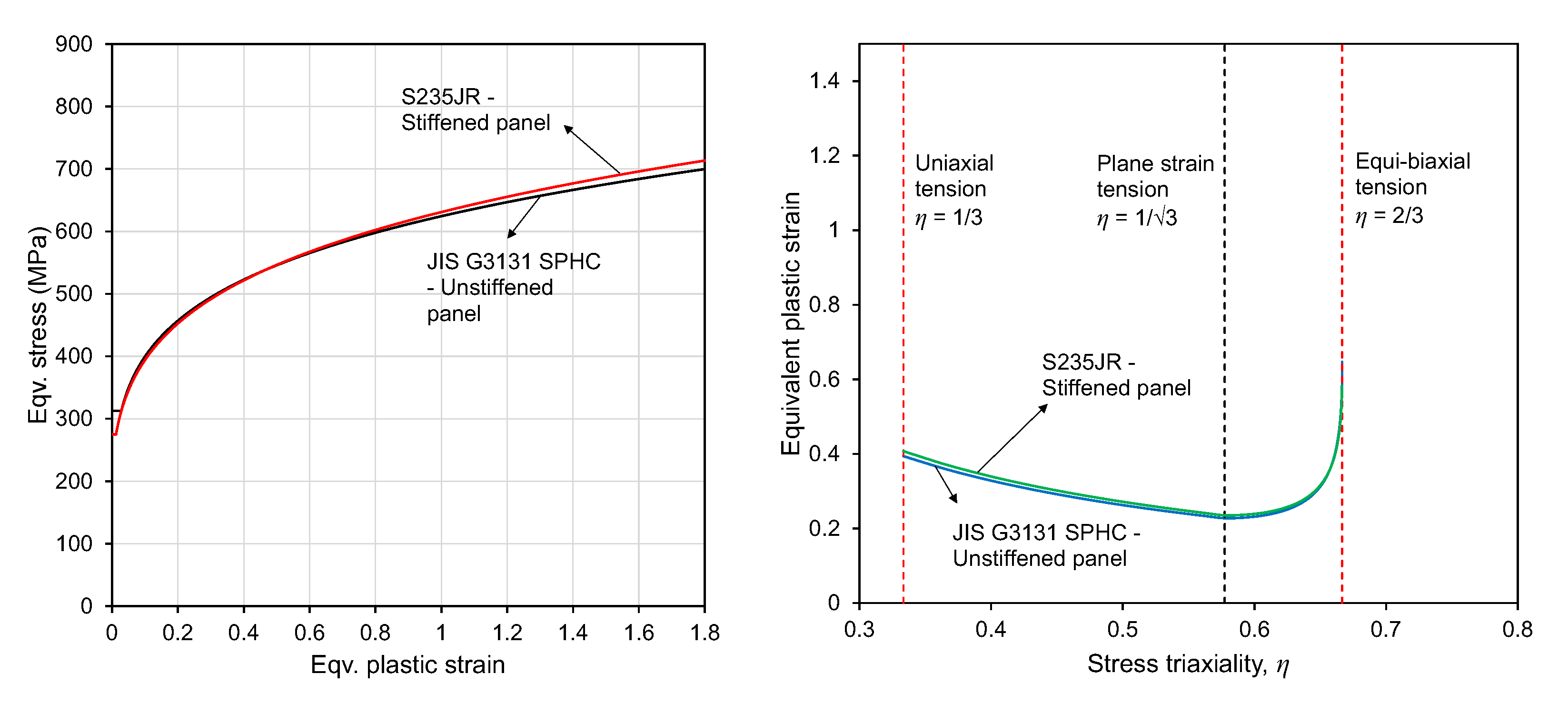
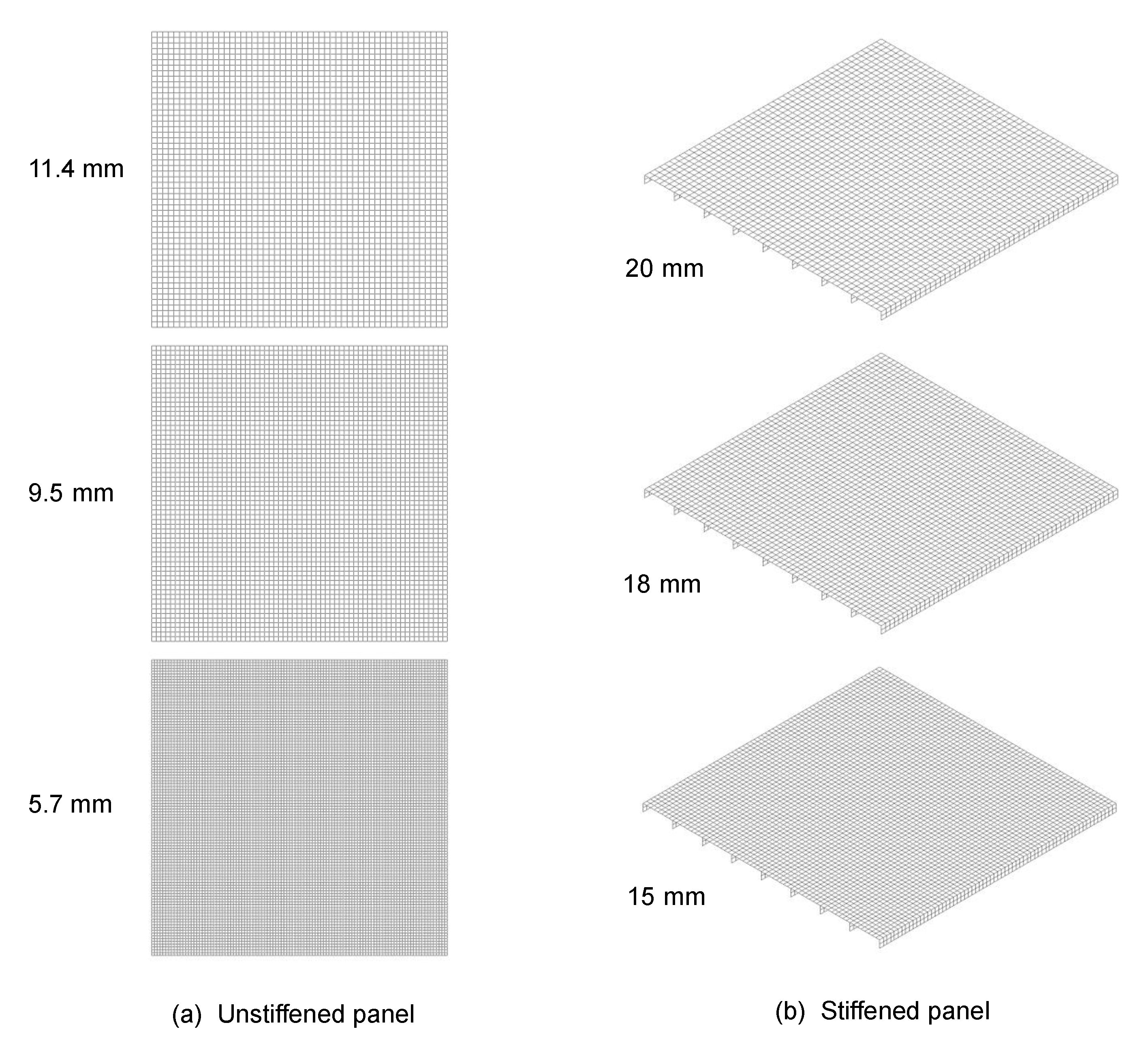
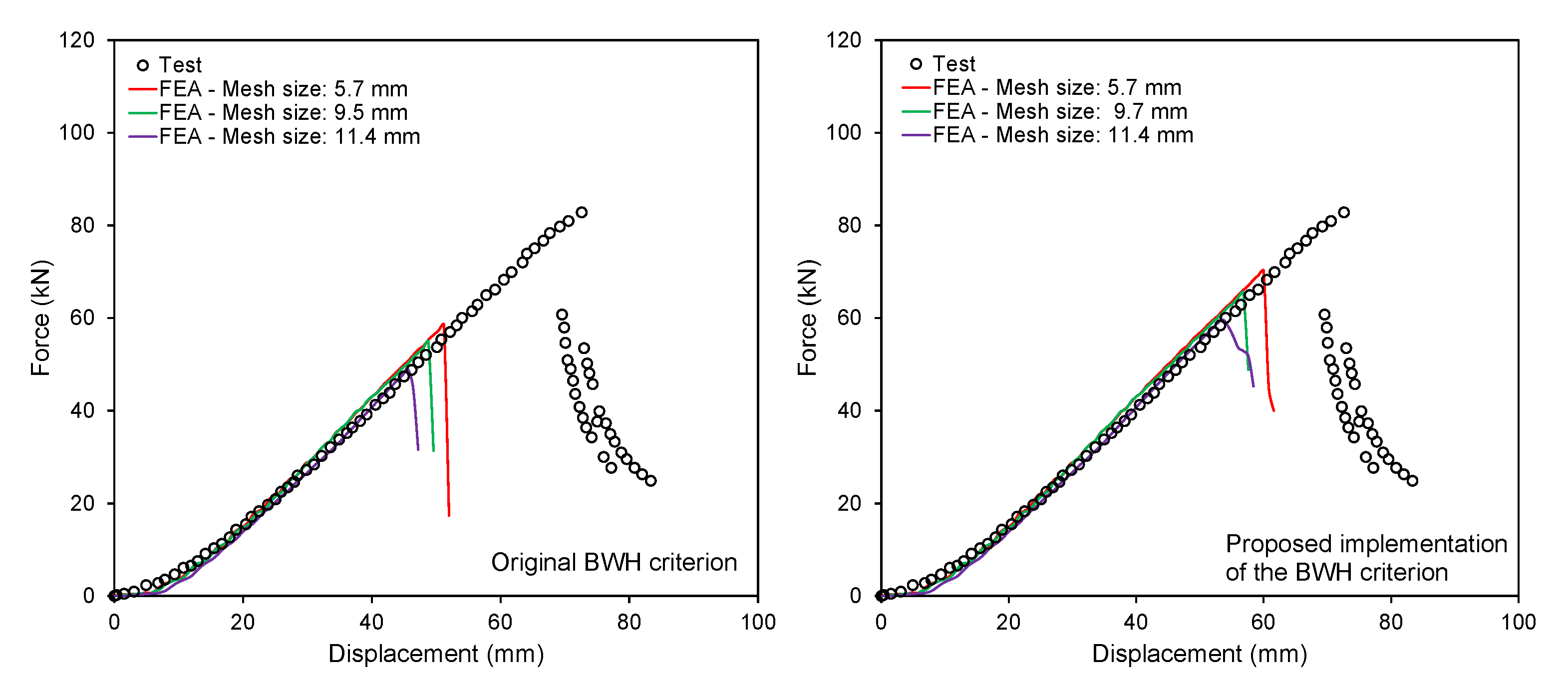
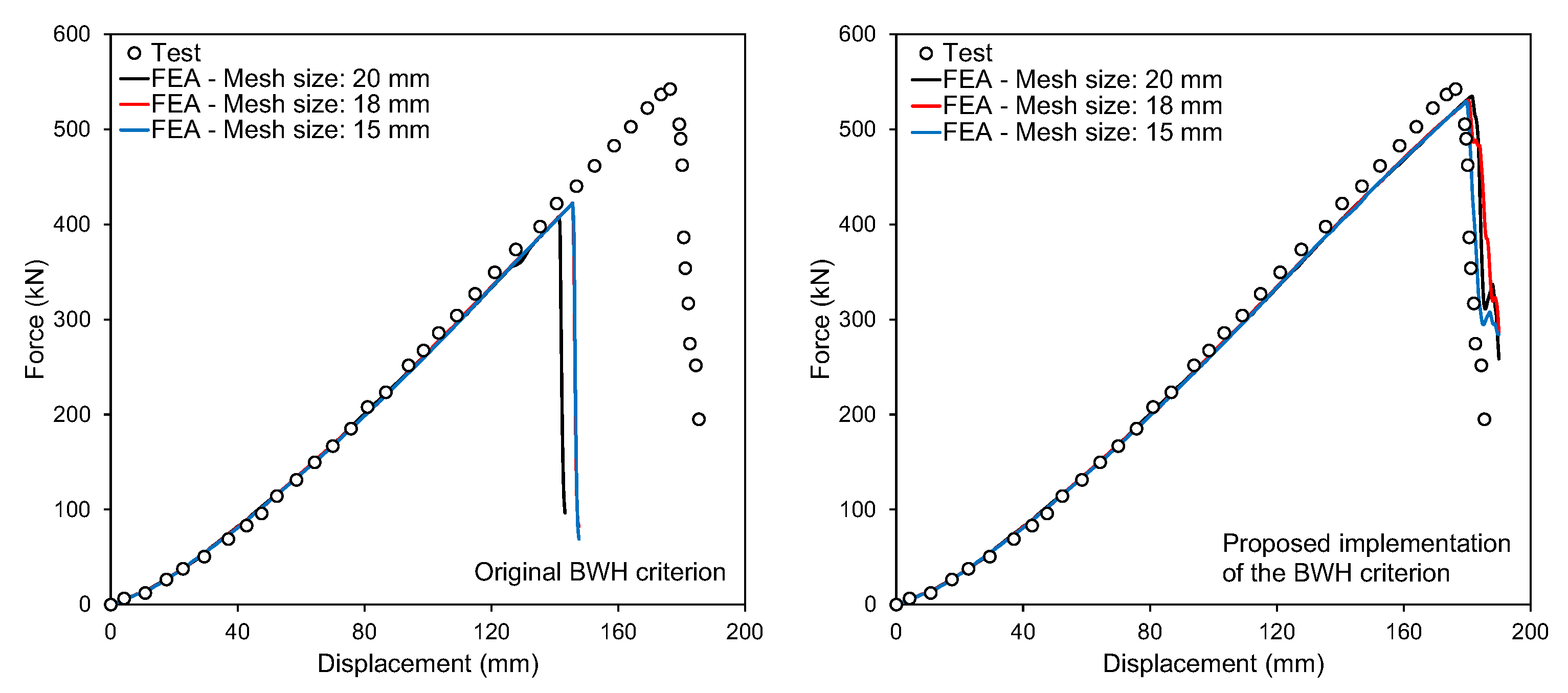
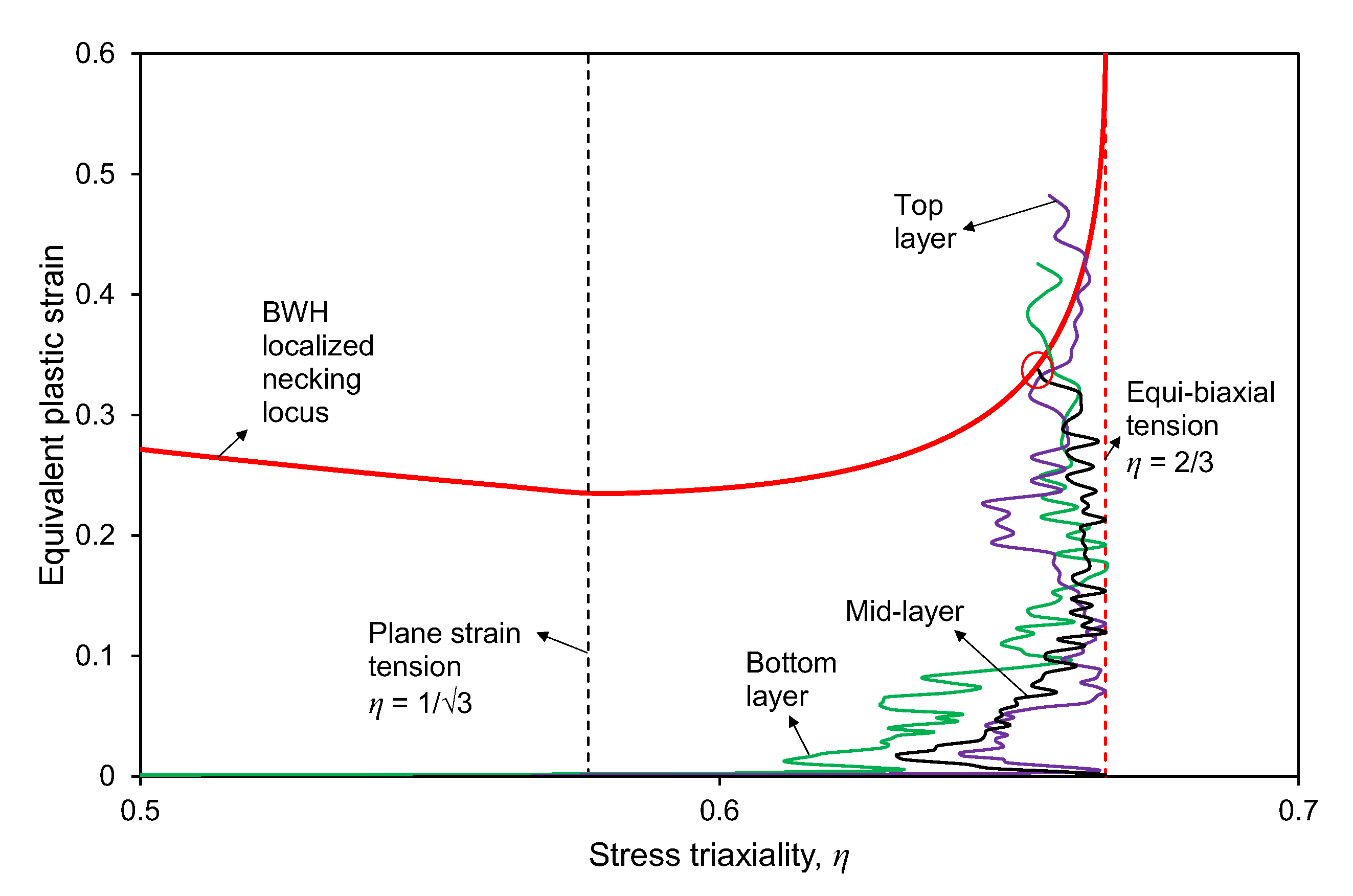
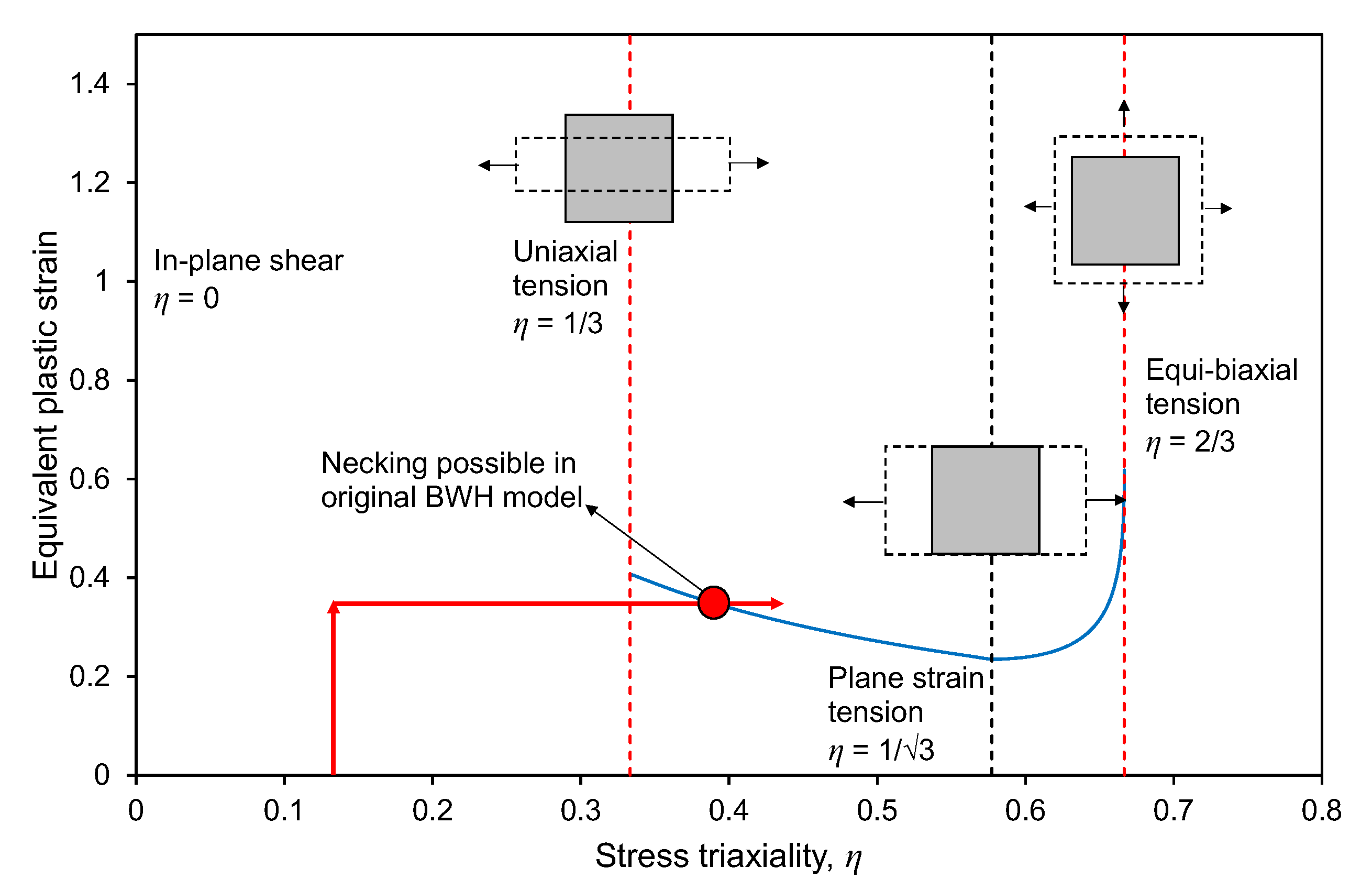

Publisher’s Note: MDPI stays neutral with regard to jurisdictional claims in published maps and institutional affiliations. |
© 2021 by the authors. Licensee MDPI, Basel, Switzerland. This article is an open access article distributed under the terms and conditions of the Creative Commons Attribution (CC BY) license (http://creativecommons.org/licenses/by/4.0/).
Share and Cite
Cerik, B.C.; Lee, K.; Choung, J. Evaluation of Localized Necking Models for Fracture Prediction in Punch-Loaded Steel Panels. J. Mar. Sci. Eng. 2021, 9, 117. https://doi.org/10.3390/jmse9020117
Cerik BC, Lee K, Choung J. Evaluation of Localized Necking Models for Fracture Prediction in Punch-Loaded Steel Panels. Journal of Marine Science and Engineering. 2021; 9(2):117. https://doi.org/10.3390/jmse9020117
Chicago/Turabian StyleCerik, Burak Can, Kangsu Lee, and Joonmo Choung. 2021. "Evaluation of Localized Necking Models for Fracture Prediction in Punch-Loaded Steel Panels" Journal of Marine Science and Engineering 9, no. 2: 117. https://doi.org/10.3390/jmse9020117
APA StyleCerik, B. C., Lee, K., & Choung, J. (2021). Evaluation of Localized Necking Models for Fracture Prediction in Punch-Loaded Steel Panels. Journal of Marine Science and Engineering, 9(2), 117. https://doi.org/10.3390/jmse9020117







